#horizontal balusters
Photo

Roof Extensions in Little Rock
An illustration of a medium-sized traditional backyard deck with an addition to the roof
2 notes
·
View notes
Photo

Transitional Deck - Deck
Inspiration for a mid-sized transitional backyard deck remodel with a roof extension
#covered patio#cultured stone#wire balusters wire fence#cable rail#horizontal cable railing#cultured stone wall#concrete decks
0 notes
Photo

Covered Deck in Indianapolis
Inspiration for a mid-sized transitional backyard deck remodel with a roof extension
#cable hand rails wire baluster#cultured stone wall#cultured stone#horizontal cable railing#cable fences cable gate#exterior steps
0 notes
Photo
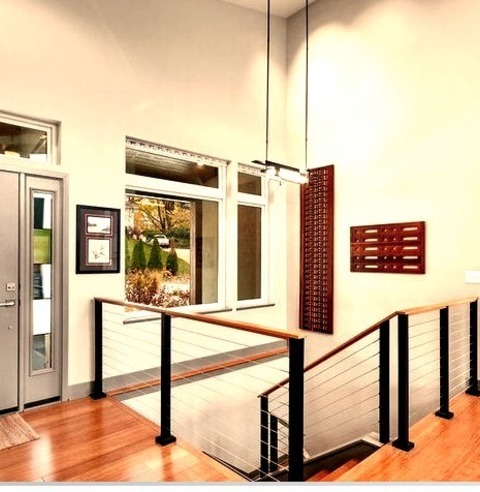
Mudroom Front Door
Mid-sized trendy entryway image with a light wood floor and a brown floor, gray walls, and a gray front door.
#gray walls#lake house#contemporary balusters#contemporary#cable balusters#horizontal cable railing#light hardwood floors
0 notes
Text
Transitional Basement - Basement

Large transitional basement image with a metal fireplace, a standard fireplace, and brown walls. It also features a medium-tone wood floor.
0 notes
Photo

Basement - Transitional Basement
Idea for a large, transitional basement with a medium-tone wood floor and a brown floor, as well as brown walls and a standard fireplace
#man cave#riverside design build#man cave basement#horizontal metal balusters#basements#home theater#built in bench seat
0 notes
Photo

Transitional Basement - Basement
Large transitional basement image with a metal fireplace, a standard fireplace, and brown walls. It also features a medium-tone wood floor.
0 notes
Photo

Pergolas in Denver
Deck - mid-sized transitional backyard deck idea with a pergola
#outdoor dining table#cable balusters#outdoor string lights#outdoor seatin#horizontal wire railing#pergola over patio
0 notes
Photo
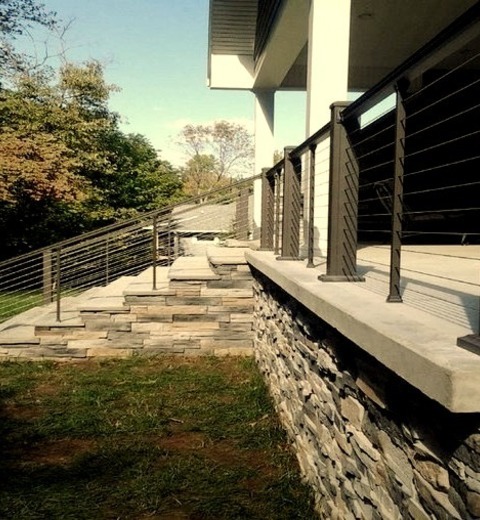
Covered Deck in Indianapolis
Inspiration for a mid-sized transitional backyard deck remodel with a roof extension
#cable hand rails wire baluster#cultured stone wall#cultured stone#horizontal cable railing#cable fences cable gate#exterior steps
0 notes
Photo
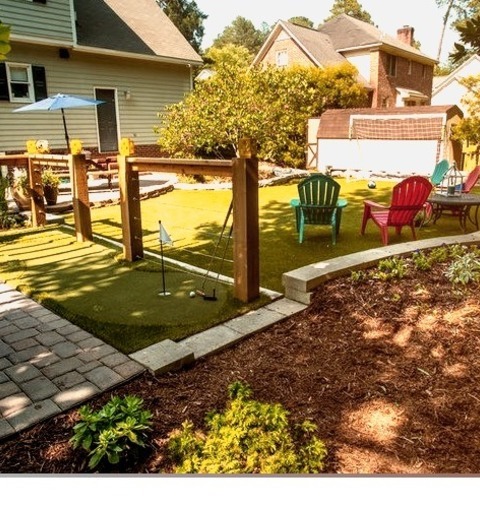
Traditional Landscape
This backyard brick landscaping is an illustration of a medium-sized traditional partially sunny backyard.
#artificial grass#wire balusters#backyard retreat#dog grass#artificial turf#horizontal cable railing#turf yard
0 notes
Text

Căsoaia Paltin
Moldavia, Vrancea county
Paltin, Romania
This single-cell dwelling structure with porch served as an annex within a farmstead, perhaps providing living space for members of an extended family. The horizontal log construction rests on stones, and is protected by deep roof overhangs. The carving of the vertical porch rail balusters contrasts with the horizontals of the construction. The porch is reached by a sloped and notched log on the right of the structure.
(photo 2000)
21 notes
·
View notes
Text
Creative Deck Railing Ideas for Style and Safety
Decks are more than just outdoor extensions of our homes; they are spaces where we entertain, relax, and enjoy the beauty of the outdoors. A crucial element that contributes to both the safety and aesthetic appeal of a deck is its railing. Whether you're building a new deck or updating an existing one, choosing the right railing can enhance the overall look while ensuring safety. In this article, we will explore various creative deck railing ideas that balance style and safety, providing inspiration for your next project.
The Importance of Deck Railings

Ensuring Safety
Safety is the primary function of deck railings. They prevent accidents by acting as barriers that protect people, especially children and pets, from falling off the deck. Adhering to local building codes and regulations is crucial to ensure your deck railings meet the required safety standards.
Enhancing Aesthetics
Deck railings also play a significant role in the overall aesthetic appeal of your outdoor space. The right design can complement your deck's architecture, enhance its visual appeal, and add value to your property. From traditional to modern styles, the options are endless.
Material Choices for Deck Railings
Wood Railings
Wood railings are classic and versatile, offering a natural and timeless look. They can be painted or stained to match your deck and home exterior. Common types of wood used include cedar, redwood, and pressure-treated lumber.
Metal Railings
Metal railings, such as wrought iron, aluminum, and stainless steel, are durable and require less maintenance compared to wood. They offer a sleek, modern look and can be designed with intricate patterns for added elegance.
Glass Railings
Glass railings provide an unobstructed view of your surroundings, making them ideal for decks with scenic views. They are available in clear, frosted, or tinted options and can be framed or frameless.
Composite Railings
Composite railings combine the look of wood with the durability of synthetic materials. They are resistant to weather, insects, and decay, making them a low-maintenance option. Composite railings come in various colors and styles to suit different design preferences.
Cable Railings
Cable railings are a contemporary choice that offers a minimalist look. Made from stainless steel cables, they provide safety without blocking the view. Cable railings are ideal for modern homes and can be combined with wood or metal posts.
Design Ideas for Deck Railings
Traditional Wooden Railings
For a classic and rustic look, traditional wooden railings are a perfect choice. You can opt for simple vertical balusters or add decorative elements such as lattice or carved designs. Staining the wood in natural tones enhances its beauty and protects it from the elements.
Modern Metal Railings
Metal railings are ideal for a sleek and modern deck. Choose from simple horizontal or vertical lines or incorporate geometric patterns for added visual interest. Powder-coated finishes in black, white, or custom colors can complement your deck's style.
Elegant Glass Railings
Glass railings add a touch of elegance and sophistication to any deck. Frameless glass panels provide a seamless look, while framed glass railings can be paired with metal or wood posts for a contrasting effect. Frosted or tinted glass offers privacy while maintaining an open feel.
Mixed Material Railings
Combining different materials can create a unique and customized look. For example, wood and metal railings blend rustic charm with modern aesthetics. Glass and metal combinations offer a contemporary look with unobstructed views.
Artistic Cable Railings
Cable railings provide a clean and unobtrusive look. You can create interesting patterns by varying the spacing and angles of the cables. Pairing cable railings with wood or metal posts can enhance the overall design and stability.
Enhancing Safety with Innovative Designs
Built-in Lighting
Incorporating lighting into your deck railings not only enhances safety but also adds ambiance to your outdoor space. LED strip lights, post cap lights, or recessed lighting can illuminate the railing and steps, making it safer to navigate the deck at night.
Child and Pet-Friendly Railings
Designing railings with safety features for children and pets is essential. Ensure the spacing between balusters is narrow enough to prevent small children and pets from slipping through. Adding a solid bottom rail or mesh can provide extra protection.
Height and Stability
Ensuring your railings are at the correct height and are sturdy is crucial for safety. Most building codes require railings to be at least 36 inches high, but checking local regulations is essential. Securely attaching railings to the deck structure enhances their stability.
Creative Finishing Touches
Decorative Post Caps
Post caps can add a decorative touch to your deck railings. Choose from various materials such as wood, metal, or glass, and designs ranging from simple to intricate. Solar-powered post caps can provide additional lighting without wiring.
Planter Boxes
Incorporating planter boxes into your railing design adds greenery and color to your deck. You can attach planter boxes to the top rail or place them on the deck floor near the railing. Choose plants that thrive in your local climate for a low-maintenance addition.
Custom Paint and Stain
Customizing the color of your deck railings can make a significant impact. Painting or staining the railings in colors that complement your deck and home exterior creates a cohesive look. Experiment with bold colors for a statement piece or soft tones for a subtle effect.
Artistic Inserts
Adding artistic inserts such as metal or glass panels with decorative designs can personalize your deck railings. Custom designs, family crests, or nature-inspired motifs can reflect your style and enhance the visual appeal of your deck.
Real-Life Experience: Transforming a Deck with Creative Railings
Imagine Jane and Tom, a couple who recently moved into a picturesque home with a spacious deck overlooking a serene lake. The existing wooden railings were outdated and didn't do justice to the beautiful view. Inspired by modern design trends, they decided to upgrade their deck railings.
After researching various options, they chose a combination of glass and metal railings. The frameless glass panels provided an unobstructed view of the lake, while the sleek black metal posts added a contemporary touch. They also integrated LED lighting into the posts, creating a stunning nighttime ambiance.
Jane and Tom's deck transformation not only enhanced the safety and aesthetics of their outdoor space but also increased the value of their home. The new railings became a conversation starter among friends and family, inspiring others to explore creative deck railing ideas.
Conclusion
Deck railings are more than just safety features; they are integral elements that enhance the beauty and functionality of your outdoor space. By exploring various materials, designs, and innovative ideas, you can create deck railings that reflect your style and ensure safety for all users.
Whether you prefer the classic charm of wooden railings, the modern elegance of glass, or the minimalist appeal of cable railings, there are endless possibilities to suit your taste and needs. Remember to consider safety regulations, incorporate unique design elements, and add personal touches to make your deck a true extension of your home.
So, what will your next deck railing project look like? The sky's the limit when it comes to creativity and functionality. Embrace the opportunity to transform your deck into a stylish and safe haven for relaxation and entertainment.
0 notes
Text

1 note
·
View note
Text
Metal Fencing Ipswich
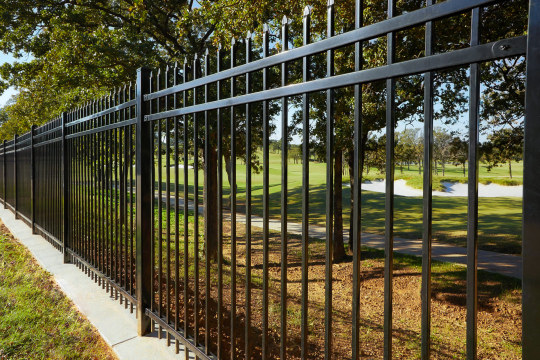
The original material for fencing started with wrought iron, the original one. Today, however, there are cheaper options that are easier to install. Here's a rundown of your options.
Centuries ago, when only a few blacksmiths produced wrought-iron fencing, it was considered a sign of wealth and status. By the 1800s, more and more blacksmiths began producing it in the 1800s until wrought-iron fencing became more commonplace.
Contemporary Styles in Wrought-iron fencing
Today, it isn’t as rare or prohibitively expensive as it once was. But it still looks expensive, and that’s a big part of its appeal.
Most of today’s wrought-iron fencing, mainly made of steel or aluminum, comes from large factories. Other than chain link fencing, which is mostly utilitarian, decorative metal fencing Ipswich comes in shapes and styles that look nothing like wrought-iron.
Fence panels and posts
Today’s metal fencing comes in kits with fencing panels and posts. If you buy a kit, or one with spiked posts you drive into the ground, you can often do the installation yourself.
Whether you choose to DIY your fence or have it professionally installed, metal fencing deserves a closer look.
Metal fence - pro arguments
Whether it’s painted cool metallic gray or jet black, or features clean lines or ornate curves, metal has an aesthetic appeal unmatched by any other fencing material. Sellers use this as an important selling point. Here are the others.
Metal is one of the most durable of all fencing materials. Hollow steel fences last upwards of 20 years. Aluminum fences, as well as solid metal and iron ones, can last a lifetime.
Metal fences ae low-maintenance. Apart from periodic repainting to control rust, metal fences need no maintenance. They don’t stain or rot, and insects can’t hurt them.
Metal Fence - cons arguments
Metal fencing has two other drawbacks. The first one is that the any styles lack privacy.
Conventional metal fencing with pickets, balusters and semi-transparent panels are primarily for decoration.
Another argument is lack of security. Those lightweight aluminum fencing is more vulnerable to break-ins than wood or composites. The ones in solid steel and iron are less vulnerable, but more expensive.
Metal fence types
Metal fences are made mostly from aluminum, steel or iron. Usually, they feature a durable powder-coat finish to protect against rust.
Some metal fences are variations of traditional wrought-iron fences with pickets. There are many other variations of the other picket styles that are available.
There are straight pickets with a square cross-section ending with a spear, ball or fleur-de-lis. Another one features alternating pickets that form a loop over intermediate ones.
There are straight pickets terminating with two top rails that include design feature like circles and crosses.
There are also metal fences that features contemporary styles. They are probably more common than faux wrought iron. Included among them is the straight featureless balustrade extending between a top and bottom rail.
There are also privacy panels made from vertical or horizontal slats, to mimic the appearance of a wood fence and the corrugated metal panels, also used for privacy fencing.
The last one are metal panels or screens with laser-cut semi-transparent designs. There are some that gives the fencing a futuristic look.
0 notes
Text
Modern Interior Stair Railings: Ensuring Safety through Compliance with Codes and Regulations

Modern interior stair railings serve a dual purpose: enhancing the aesthetics of a home while also playing a crucial role in ensuring safety during stairway navigation. Adhering to various building codes and regulations is essential to ensure that these railings meet the required safety standards.
International Building Code (IBC)
The International Building Code (IBC) is a widely recognized set of standards for construction in the United States, providing comprehensive guidelines for interior stair railings to ensure safety. Some key IBC requirements for modern interior stair railings include:
1. Height and Strength: Stair railings must be a minimum of 36 inches in height from the stair tread, ensuring a secure handhold for users. These railings should have the strength to withstand a horizontal load of at least 50 pounds per linear foot, ensuring stability. To minimize the risk of accidents, the design should incorporate balusters or railing components with openings designed to prevent a 4-inch diameter sphere from passing through.
2. Handrails: Handrails are vital components of indoor stair railings, offering users essential support and stability. They should be within the height range of 34 to 38 inches and feature a graspable surface typically spanning 1.25 to 2 inches in diameter. Furthermore, handrails must exhibit uninterrupted continuity along the entire length of the staircase, including landings, to provide a consistent and reliable source of support for users.
3. Stair Construction: Stair construction must adhere to IBC regulations, which specify a minimum width of 36 inches (31.5 inches when handrails are present on both sides). Riser heights must be consistent, not exceeding 7.75 inches, and tread depth should be at least 10 inches. Stairs with nosings should ensure that the nosing doesn't project more than 1.25 inches over the tread below to ensure safety and compliance with building codes.
4. Material Selection: Modern interior stair railings must prioritize durability and fire resistance to prevent the propagation of flames during fires. Common materials include wood, metal, and glass, but it is vital to adhere to fire safety regulations. Compliance with local building codes is necessary, and consultation with the local building department is often required for full adherence.
5. Accessibility Considerations: In public spaces, it's essential to consider accessibility guidelines, including those set by the Americans with Disabilities Act (ADA). These guidelines include specific handrail design specifications to accommodate individuals with disabilities, ensuring equitable access and safety for all users.
In conclusion, adhering to safety codes and regulations is paramount when designing and constructing modern interior stair railings. These regulations not only ensure the safety of those using the stairs but also contribute to the overall quality and compliance of the built environment.
Resource:https://stairwarehousereviewsblog.wordpress.com/2023/11/08/modern-interior-stair-railings-ensuring-safety-through-compliance-with-codes-and-regulations/
#modern handrail#metal stair balusters#stair spindles#metal balusters#interior stair railing systems#exterior wall mounted handrail#farmhouse stairs#modern wall handrail#stairwarehouse reviews#wrought iron spindles
0 notes
Text
Lecture Notes MON 23RD OCT
Masterlist
BUY ME A COFFEE
Doing Art History: Architecture
Looking at this building, without prior knowledge of its purpose or background, what are the defining features and what do they tell us? What do you see and how do you interpret thus building? What gives you that impression?

Aspects of this house that give it an air of grandeur, or rich quality, can be associated with the colour of it. White render is a difficult colour to upkeep on a house, and truthfully any colour is. This white render highlights how expensive this building is, as more effort in building highlights a performance of wealth.
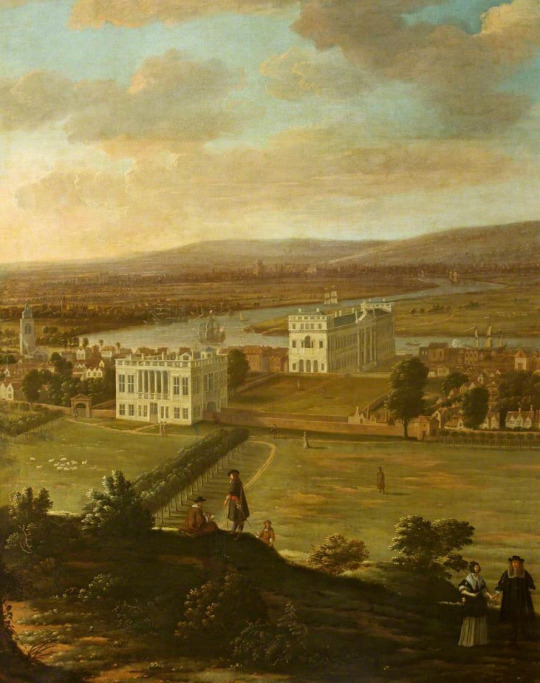
Hendrick Danckerts, View of the Queen's House and Greenwich Palace from One Tree Hill
1670s National Trust, Dyrham Park
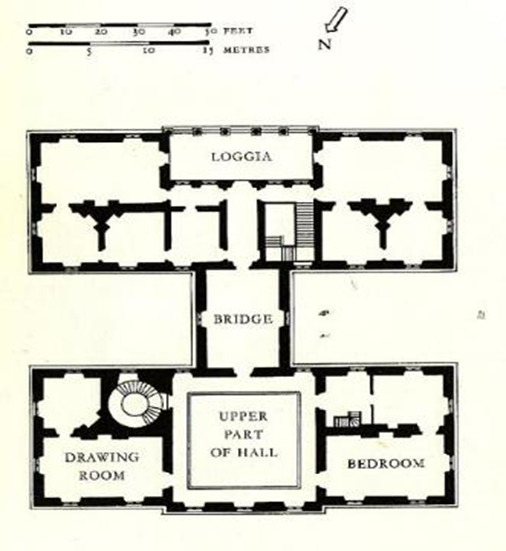

Inigo Jones, Queens House, Greenwich,1616-1618, 1629-1635
Here, the historic image of the house (an archival image) helps us understand it’s birth and change through time. Blueprints and plans are especially helpful in dissecting a building, it’s like seeing the arteries, muscles, bone structure of the building. Stripped to its core, and revealing things we may not have known about it from the outside, or even inside the space we may have trouble mapping the areas that surround us. This also reveals degrees of privacy that are afforded inside the space, certain intimate, and hidden rooms.
The Axial symmetry, and the balustrade, suggest and define the grouping as classical.
Axial symmetry is symmetry around an axis; an object is axially symmetric if its appearance is unchanged if rotated around an axis.
Render and Tudor Brick Red have a long history, of one replacing the other and then the opposite begin more favourable. We will explore this further in the post, specifically around William Morris’ home. This transition through time and space, changes due to the address of person and society. We learn to read buildings by the buildings we’re exposed to.
KEY WORDS: (find more art key words here)
Architrave: In classic architecture, an architrave is the lintel or beam that rests on the capitals of columns. The 6term can also apply to all sides, including the vertical members, of a frame with mouldings around a door or window. Cornice – A cornice (from the Italian cornice meaning “ledge”) is generally any horizontal decorative moulding that crowns a building or furniture element – for example, the cornice over a door or window, around the top edge of a pedestal, or along the top of an interior wall.
Colonnade: row of columns generally supporting an entablature (row of horizontal moldings), used either as an independent feature (e.g., a covered walkway) or as part of a building (e.g., a porch or portico).
Loggia: (from the Italian word for 'lodge') is an outdoor corridor or gallery with a fully covered roof and an outer wall that is open to the elements. Traditionally, loggias either ran along the facade of a building or could exist as a stand-alone feature.
Balustrade: a railing supported by balusters, especially one forming an ornamental parapet to a balcony, bridge, or terrace.
Rustication: is a range of masonry techniques used in classical architecture giving visible surfaces a finish texture that contrasts with smooth, squared-block masonry called ashlar. The visible face of each individual block is cut back around the edges to make its size and placing very clear.
String Course: a horizontal band or course, as of stone, projecting beyond or flush with the face of a building, often molded and sometimes richly carved.

Note: Classic buildings used rustication to mimic Italian/Roman architecture and to make the building seem heavier and in turn sturdier, especially with the use of horizontal weight and ground weight.
These qualities, of weight, and grounding, can lead to a certain building types like banks being associated classical building styles.


Double Height Hall
The inside of the building, although harder to gauge through photos of the space, is a perfect 40 by 40 feet. Perfectly symmetrical. This space, with the balcony overlooking the space, is the welcome mingling area, as seen and deduced by the large window doors that lead and make the space brighter. This symmetry adds to the demonstration of wealth, as it demonstrates knowledge, power, and influence. Especially a knowledge of geometry. This perfect symmetry and flooring design out of marble echoes the Roman and Classical style.
Cultural Capital: wealthy enough to spend money on it all, and to demonstrate knowledge and new forms of understanding, creation, and interpretation. When it’s less accessible to people. Especially in denial of the everyday building and its meaning.
USE OF BUILDING:
How does architecture hint at behaviour? The way we should conduct ourselves and interact with the building and its space? With the Queens House, the door positions and stairs are leading us to the foyer, or socialising space that was just discussed.
This socialising space, has a balcony leading around the middle, suggesting voyeurism. To spectate and be spectated. This gallery, hints at being behaved, dressed up for the viewing pleasure of others.
Jones, the architect, was known for creating masks. Masks were a performance by aristocrats for other aristocrats, various people of court preforming for each other, with elaborate costumes and stories. Usually retelling or preforming some mythos or other.
Jones was not an architect as we know it. Keep in mind that architects were not trained due to it not being a profession, therefore no training was needed. He underwent travel to Italy and drew while being there in person, but also has background understanding of the people, and their buildings use. He is known to give buildings a dramatic flair.

Tulip Staricase
A hint of his dramatic flair can be taken from this: Tulip Staircase. The first unsupported staircase in England, which was seen as a great feat of engineering. Contributing to the wealth and well of knowledge, the culture capital on display.
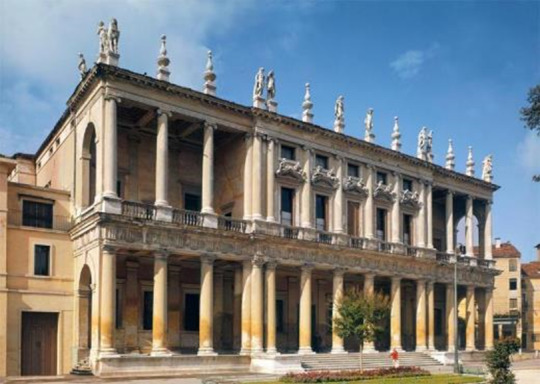
Palladio, Palazzo Chiericati, begun 1547
This building, from the 16th century, was the direct inspiration for the Queens House. England was greatly drawing inspiration from the Mediterranean and signified the pre-birth of the classical antiquity. Of course, this villa palace design was adapted for England’s weather and climate.
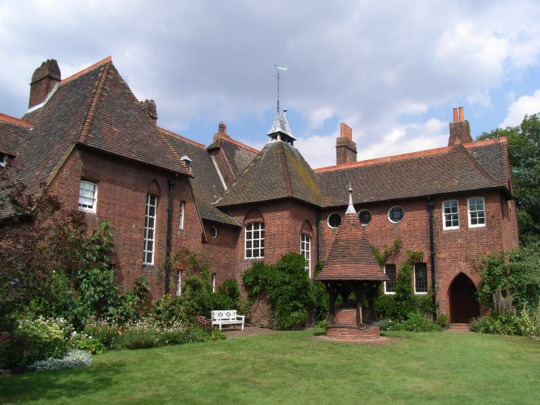
Philip Webb, The Red House, Bexleyheath, 1859-1860.
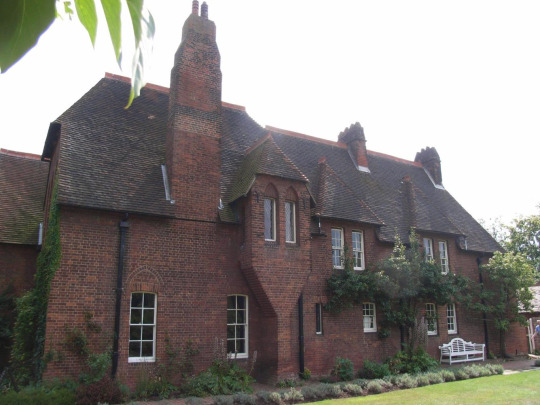
Philip Webb, The Red House, Bexleyheath, 1859-1860, east elevation.
William Morris: The Red House
The Red House, where William Morris lived and had designed for him by a young architect, displays a change in ideals and beliefs that is reflected from society in their architecture. Especially when an artist has a clear set of beliefs and wishes to embody them. Moreover, as the Arts and Crafts movement founder, he wished to separate himself from previous ideas, and this clearly comes through with the architecture.
The aforementioned Tudor Red Brick comes back, and the white render is all but abandoned in this building. Symmetry goes out the window, elements of gothic come into play, windows are miss matched and experimental, the steep roof gives this house a medieval quality. Morris was a great fan of the tales of King Arthur, round table, and his knights. (He even roleplayed as them with his art friends at his house).
Façade: a single elevation.
The Red House all but attempts to abandon this with its various elevations, recessions, and projections.
Fenestration: putting windows in certain places.
Architects guide us by manipulating light in indoor spaces, they guide our eyes and in turn lets our brain subconsciously know which way to go. The legibility of the windows helps us understand the interior address, design responds to function but also to aesthetic choice.
The Red House adopts a vernacular architecture style too, incorporating it into the gothic. Vernacular Architecture: a type of local or regional construction, using traditional materials and resources from the area where the building is located. For the people/belonging to the people. Return to nature. Eg. Barns and Farmhouses.

Philip Webb and William Morris, The Red House, Bexleyheath, 1859-1860, Drawing Room
Morris aspired to have a community of Art Houses, even encouraged other artists to build their own houses in the area, people such as Rossetti. All that ended up happening was Rossetti had an affair with Morris’s wife. So….
Morris actually learned to weave himself and experimented with dyes to better understand and create his art.

Charles Rennie Mackintosh, Hill House, Helensburgh, 1902-4


Charles Rennie Mackintosh, Hill House, Helensburgh, 1902-4 Detail: hallway (left), drawing room (right)
Charles Rennie Mackintosh: Hill House: Art Nouveau
A house building upon Morris’ ideas. Historically the architect also did the interior design, if you observe the photo of the hallway, managing the volume and light, the architect controls where you should go/stay.
1902-04 Japan becomes more influential and inspires a large aspect of Art Nouveau. Mackintosh uses graphic pattern carpets/rugs to give direction on where moveable furniture should go.
Taking note of the previous buildings observed and presented in this post, look at the Hill House and consider how similar/different it is to the previous two.
#art show#art gallery#artwork#art tag#paintings#essay#art exhibition#writing#art hitory#art#architecture#artists on tumblr#world building#commercial buildings#apartment buildings#town#cities#concrete#streets#artists#drawings#illustration#art style#history#highlights#historical#pre raphaelite#pre raphaelism#william morris#essay writing
0 notes